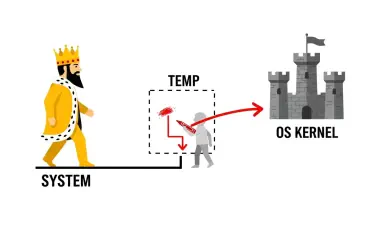The rapid advancement of artificial intelligence (AI) has brought transformative changes across various industries, pushing governments around the globe to establish regulations ensuring the technology’s safe and ethical use. These regulatory frameworks, such as the OECD AI Principles and the EU AI Act, place new demands on transparency, accountability, and risk management. While these developments aim to safeguard public interests, businesses integrating AI into their cybersecurity strategies face a labyrinth of compliance challenges. To navigate this complex landscape, industry experts share their insights on aligning AI practices with emerging global regulations and overcoming the hurdles posed by varying jurisdictional standards.
1. Regularly Evaluate and Test AI Systems
The dynamic and evolving nature of AI technology necessitates regular evaluation and testing of AI systems to ensure their accuracy, performance, and security. This proactive approach helps identify potential vulnerabilities and threats before they can be exploited by malicious actors. According to Anastasios Arampatzis of Bora Design, AI system assessments should be performed consistently, especially when significant changes occur in business operations or technology. This practice prevents model drift—where an AI model’s predictions degrade over time—and ensures that biases are not inadvertently included in the system.
In a fast-paced technological landscape, organizations that regularly review and test their AI systems are better equipped to adapt to changes and maintain robust cybersecurity defenses. Frequent evaluations provide a clear understanding of the system’s strengths and weaknesses, enabling timely adjustments to address any issues that arise. By conducting these assessments, businesses can also demonstrate their commitment to responsible AI use, which is increasingly important as regulatory scrutiny intensifies. Ultimately, consistent evaluation and testing form the foundation of a resilient AI strategy, capable of withstanding both internal and external challenges.
2. Incorporate Security Measures Throughout the AI Development Process
Integrating security measures throughout the AI development process is crucial for ensuring the quality and safety of AI systems. As software applications, AI systems require secure coding practices, regular security inspections, and adherence to the principle of least privilege for data access. This comprehensive approach helps mitigate risks associated with AI development and deployment, protecting both the organization and its stakeholders.
Anastasios Arampatzis emphasizes the importance of embedding security protocols at every stage of the AI lifecycle. By doing so, organizations can detect and address security vulnerabilities early, preventing potential breaches that could compromise sensitive data. Regular security audits are essential for maintaining high security standards, providing insights into areas that need improvement. Adopt secure coding practices to minimize the likelihood of introducing security flaws during development. Furthermore, limiting data access privileges ensures that only authorized personnel can access sensitive information, reducing the risk of unauthorized access and misuse.
The integration of security measures into the AI development process also aids in compliance with emerging regulatory requirements. As global standards for AI governance evolve, organizations must demonstrate their commitment to maintaining secure and ethical AI practices. By prioritizing security from the outset, businesses can navigate the complex regulatory landscape more effectively, ensuring that their AI systems meet the required standards and contribute to broader cybersecurity efforts.
3. Create and Maintain Governance Policies and Procedures
Developing and upholding governance policies and procedures to address AI-related cybersecurity risks is a critical step for organizations aiming to ensure compliance with the rapidly evolving regulatory landscape. As AI technologies continue to advance, the need for robust governance frameworks becomes increasingly important. These frameworks help oversee compliance with regulatory requirements and trustworthiness considerations, providing a structured approach to managing AI-related risks.
According to industry experts, a well-defined governance framework should encompass several key elements. First, it should establish clear roles and responsibilities for managing AI technologies, ensuring accountability at every level. Second, it should include procedures for regular audits and assessments of AI systems to ensure they remain compliant with regulatory standards. Third, the framework should address the ethical implications of AI use, promoting transparency and fairness in AI decision-making processes. Establishing policies that guide the ethical development and deployment of AI systems helps build trust with stakeholders and aligns organizational practices with societal expectations.
Maintaining governance policies and procedures is not a one-time effort but an ongoing process. Organizations must stay informed about changes in the regulatory environment and adapt their governance frameworks accordingly. This requires a coordinated effort across various departments, including legal, compliance, and IT teams. By fostering a culture of continuous improvement and accountability, organizations can better manage the complexities of AI governance and enhance their overall cybersecurity posture.
4. Always Involve Human Oversight
As companies leverage AI to strengthen their cybersecurity, they must navigate differing standards and regulations that vary by jurisdiction. Aligning AI practices with these emerging global regulations is no simple task, and it requires a thorough understanding of both the technological and legal landscapes. Industry experts offer valuable insights into how businesses can manage these complexities. They emphasize the importance of staying informed about changes in regulations and how they impact AI applications.
Moreover, experts advise that companies invest in training and development to ensure their teams are adept at implementing AI within the bounds of these new frameworks. By doing so, businesses can better manage risks and enhance their compliance efforts. Despite the hurdles, properly aligning AI practices with global standards can result in robust cybersecurity measures that protect both the organization and its stakeholders.













